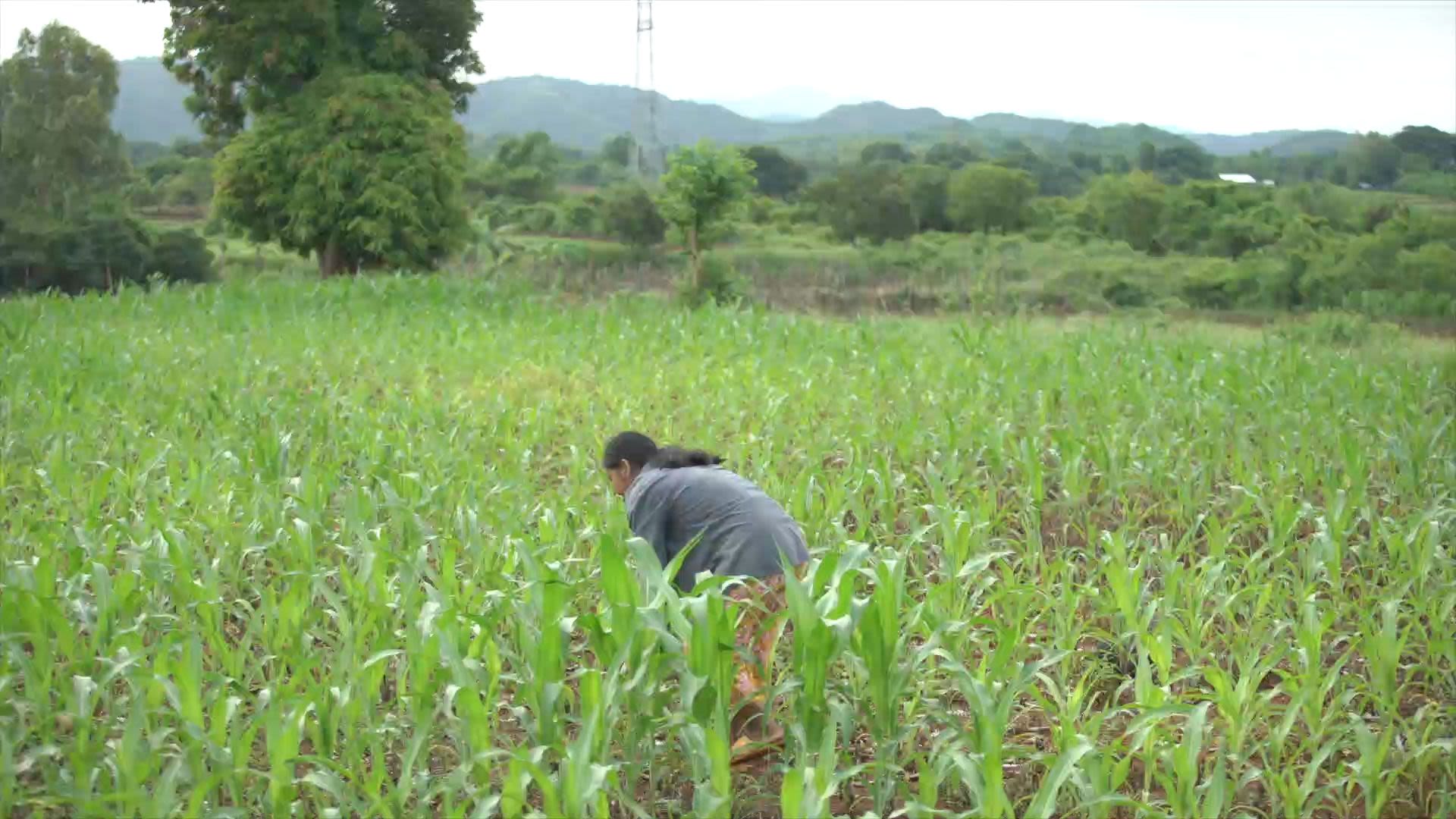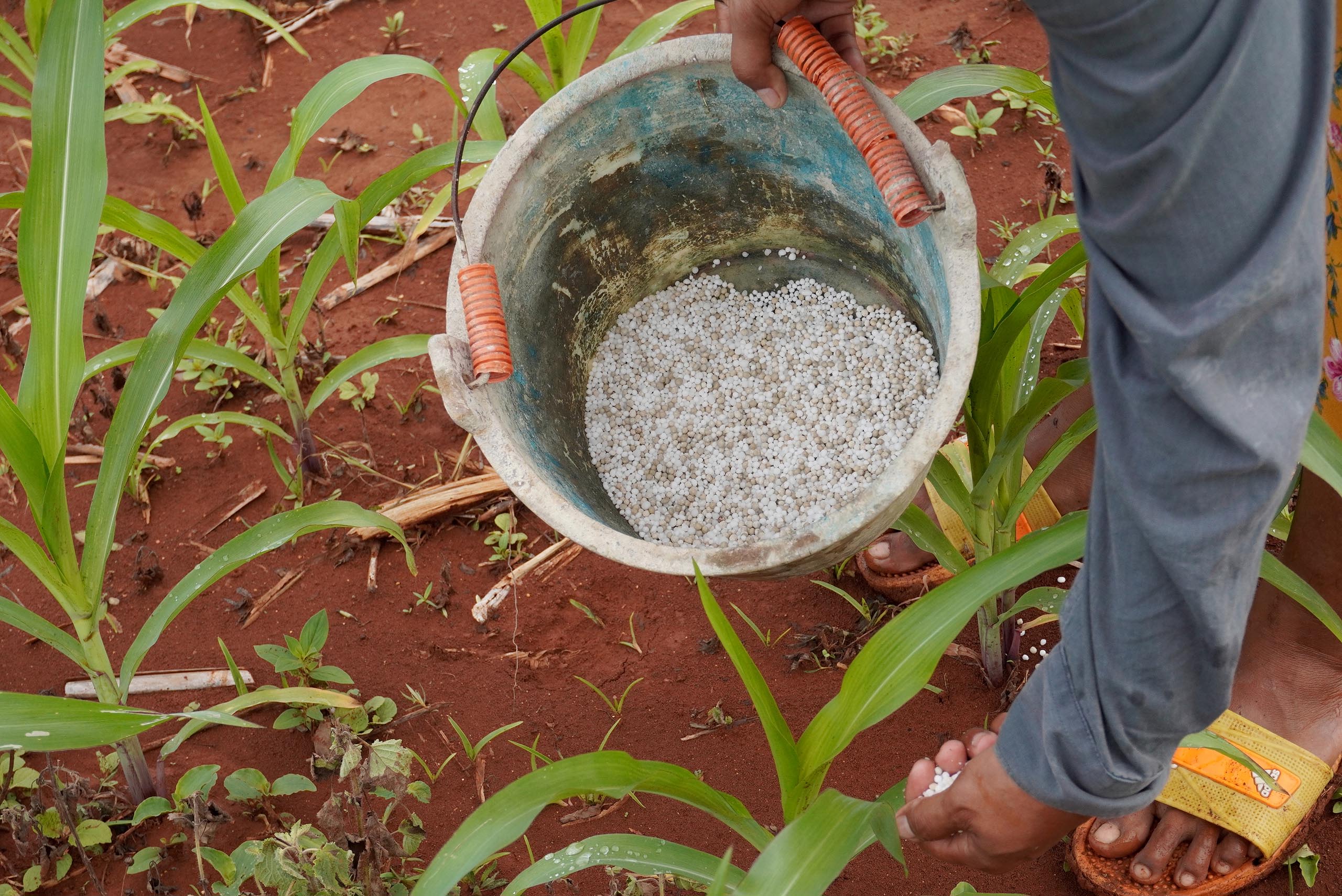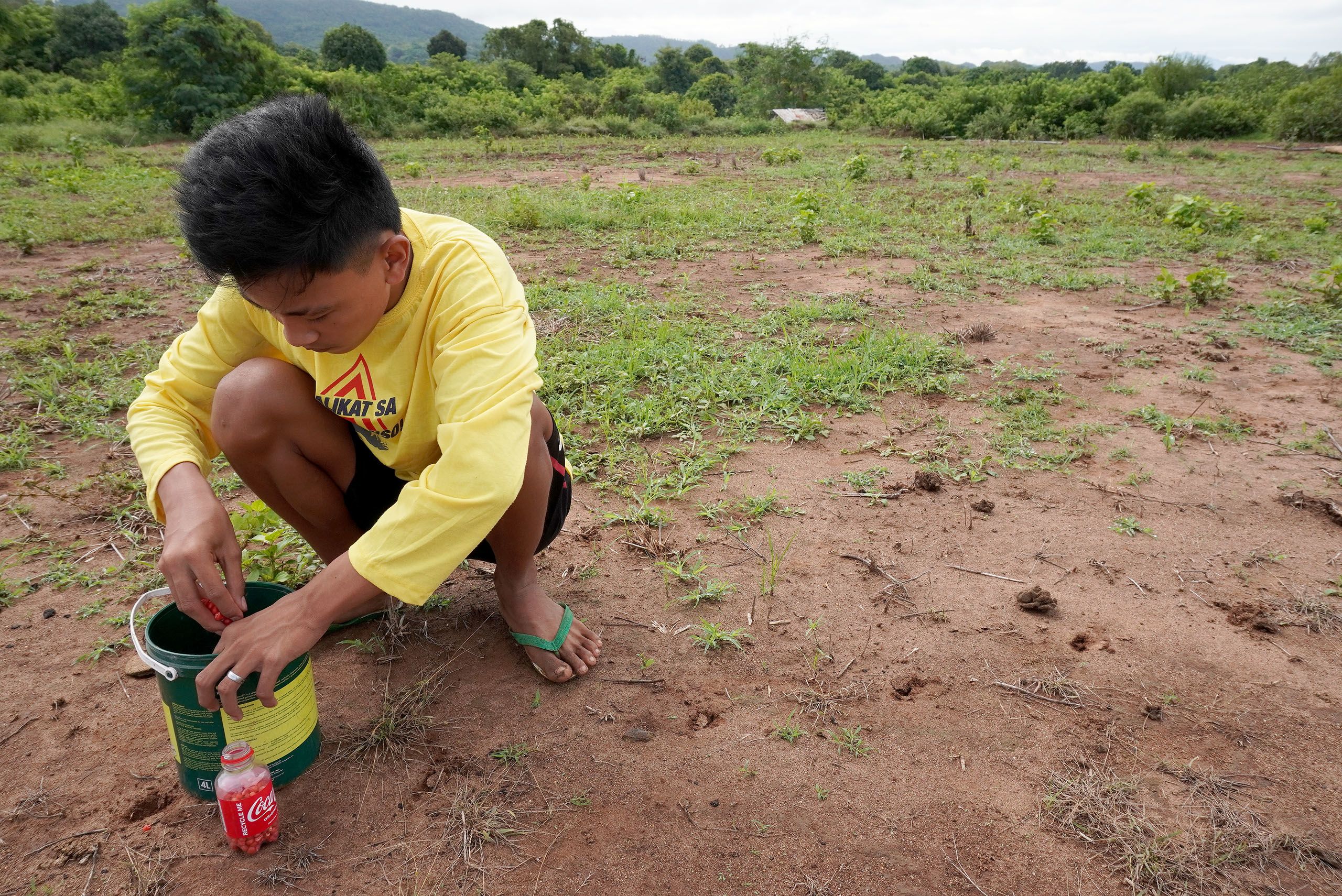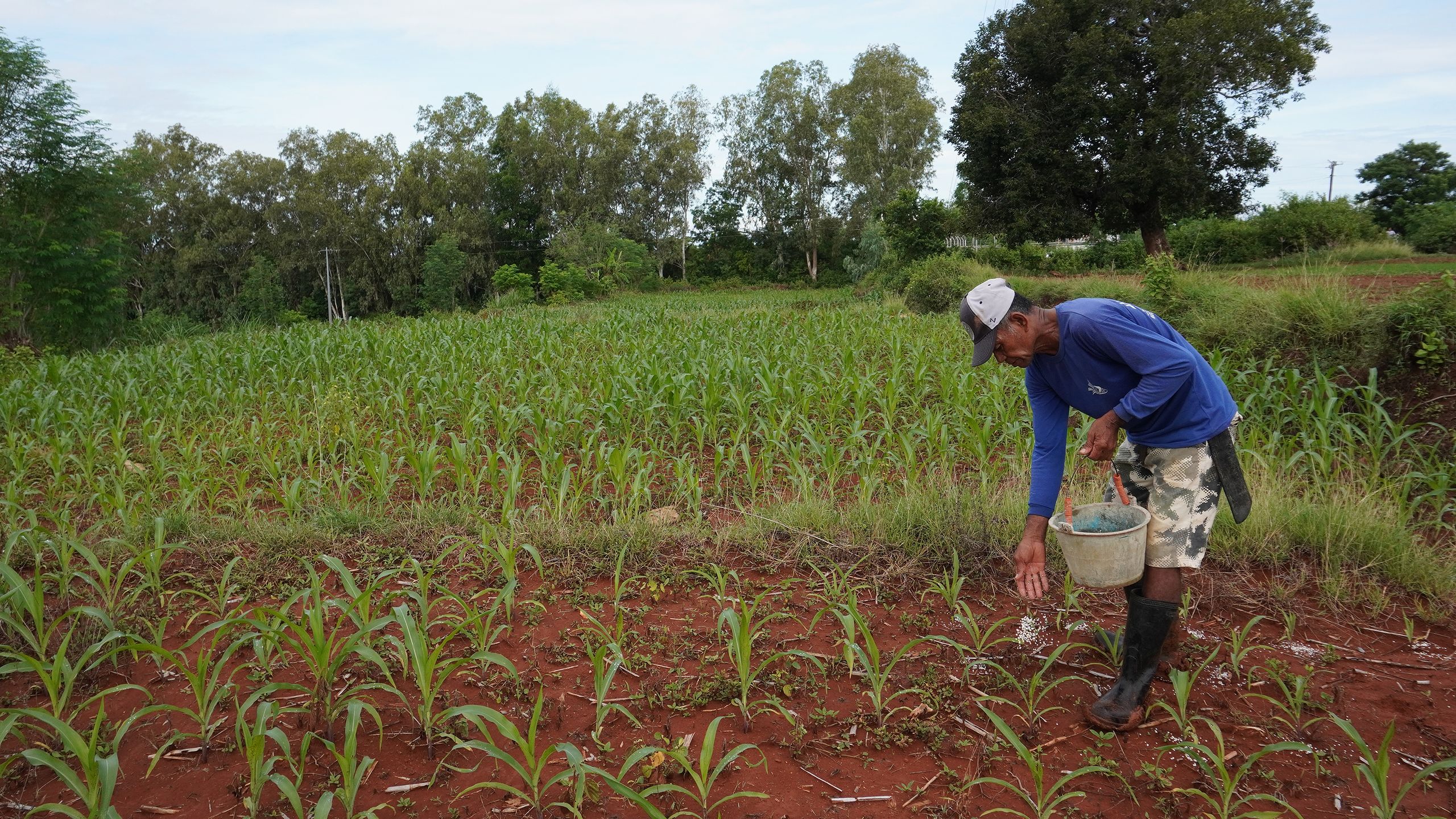Typhoon Insurance Shelters Filipino Farmers

Thirty- five year old Karen Yanos has been a farmer all her life. She started when she was 15 years old. Two decades on, she continues to work in the fields, selling fruit and vegetables to send her three boys to school. The days are long. Yanos, who now works with her husband Freddie, often starts at seven in the morning, working six days a week. Farming has always been a family affair. During the planting season, when there is much to do, Yanos asks her sons and extended family members to work in the farm instead of hiring outside help.
Yanos is among the 5.5 million small-scale farmers in the Philippines. Her small piece of farmland is her lifeline and only source of income. When the COVID-19 pandemic struck, it also became a valuable source of food for her family. “We ate boiled bananas and sweet potatoes from the garden since we could not really go out to buy meat and fish,” Yanos recalled.
Once the COVID-19 restrictions eased up a bit, Yanos made plans to plant more crops in preparation for the harvesting season. But the rain never came. “The weather patterns have really become unpredictable. The rainy season here usually starts in May but now, it’s already June and there’s really not enough rainfall to start planting season,” Yanos said.
Extreme weather events, like drought and typhoons, are becoming more and more frequent. Its devastating effects place the Philippines in the list of the most vulnerable countries affected by climate change. In a study by the World Food Programme, the Philippines incurred Php 463 billion ($8.3 million) in damages due to extreme weather events over the past decade, with about 63% of these damages in agriculture. In December 2021, Typhoon Rai, the strongest typhoon that year, caused losses worth 11.1 billion Php ($215 million) to agricultural crops and farmland.
For Yanos, typhoon Ineng in 2019 was devastating. It wiped out more than half of her annual harvest. Determined to protect her livelihood from typhoon-related damages, Karen sought out a crop insurance product that same year from her local micro finance institution. Her diligence in paying monthly premiums paid off as she was able to claim a total of Php 25,000 ($500) following four major typhoons between 2019-2021. “I got the money in two days once I completed the requirements. All I had to do was submit an insurance claim and present supporting documents to my loan officer. I used the payout for our daily expenses, like food for my children,” Yanos said.
Crop insurance due to typhoons was uncommon in the Philippines. But that changed when in 2017, the International Finance Corporation (IFC) partnered with CARD Pioneer Microinsurance Inc. (CPMI), a joint venture between CARD Mutually Reinforcing Institutions (CARD MRI), the largest microfinance institution in the Philippines and Pioneer, a trusted group of insurance companies. The partnership was formed to launch the Binhi (seed) insurance product for rice and corn farmers.
It was a concept three years in the making. CARD had formed CPMI to develop a typhoon insurance product. Then CPMI requested technical support from IFC, who brought in actuarial experts to analyze historical agricultural damage and weather data to develop a risk-pricing system that would work. It was a plan that allowed CPMI to strategically manage its typhoon risk and set a reasonable, sustainable price for its customers. The project received funding from IFC, CARD, the governments of Australia and Canada, and the Global Index Insurance Facility, a multi-donor trust fund managed by IFC.
It’s a concept that has delivered for farmers. More than 34,000 farmers in 12 provinces have purchased the product, often packaged with loans. What’s more, over 6,000 farmers have received payouts, including around 860 who were hit by Typhoon Maring in October 2021. The product currently retails with no premium subsidy support from the government. Claims are settled in two to five days. Its effectiveness has encouraged more farmers to take out policies and has led to repeat purchases by farmers, who have successfully made claims and received payouts.




Yanos is among the 5.5 million small-scale farmers in the Philippines. Her small piece of farmland is her lifeline and only source of income.
Yanos is among the 5.5 million small-scale farmers in the Philippines. Her small piece of farmland is her lifeline and only source of income.

During the planting season, when there is much to do, Yanos asks her sons and extended family members to work in the farm instead of hiring outside help.
During the planting season, when there is much to do, Yanos asks her sons and extended family members to work in the farm instead of hiring outside help.

Karen Yonos and members of her family sprinkle fertilizer in a plot of farmland in Ilocos Norte, Philippines.
Karen Yonos and members of her family sprinkle fertilizer in a plot of farmland in Ilocos Norte, Philippines.
It’s also helped to expand the market. CPMI now offers crop insurance not only through CARD but also through Cantilan Bank.
For Aira Labao, the Officer in Charge for CPMI, it’s not only a matter of pride working on the insurance products, it’s also personal.
“I can relate to the lives of farmers because my father is a farmer, and even his brothers were farmers. I know the hardships they need to go through, from planting to harvesting, and I know the difficulties and pain they experience whenever there’s a typhoon and their crops get destroyed. They are left with close to nothing, the investment they’ve made goes back to zero. This is why this project is truly a testament to our dedication to help this sector,” Labao said.
For Labao, helping farmers is essential to food security for the country. “Farmers are the ones who feed us. If it weren’t for them, we won’t have rice or vegetables to eat, we won’t have any food to serve on our tables, so we really have to protect this sector,” Labao said.
Published January, 2023
